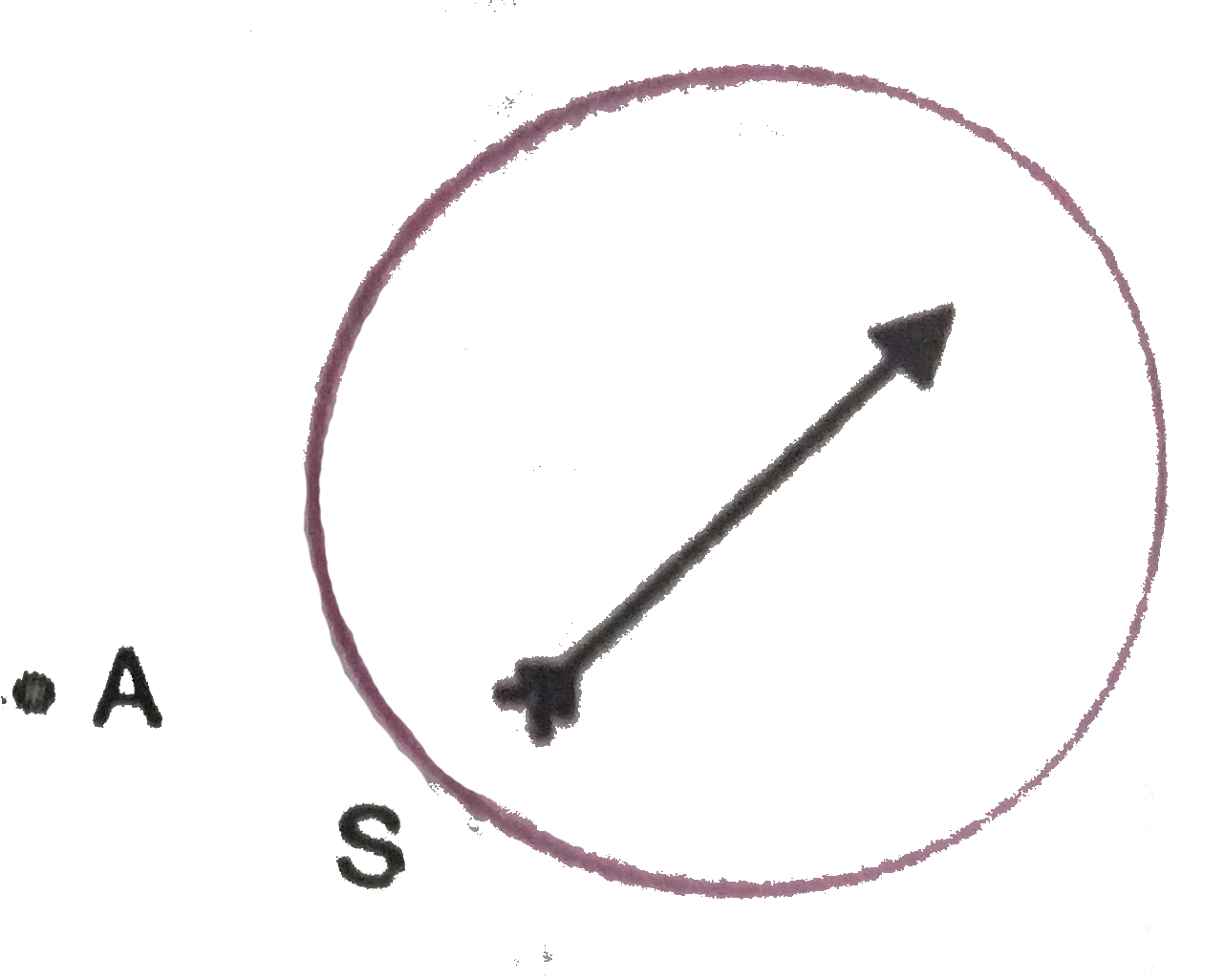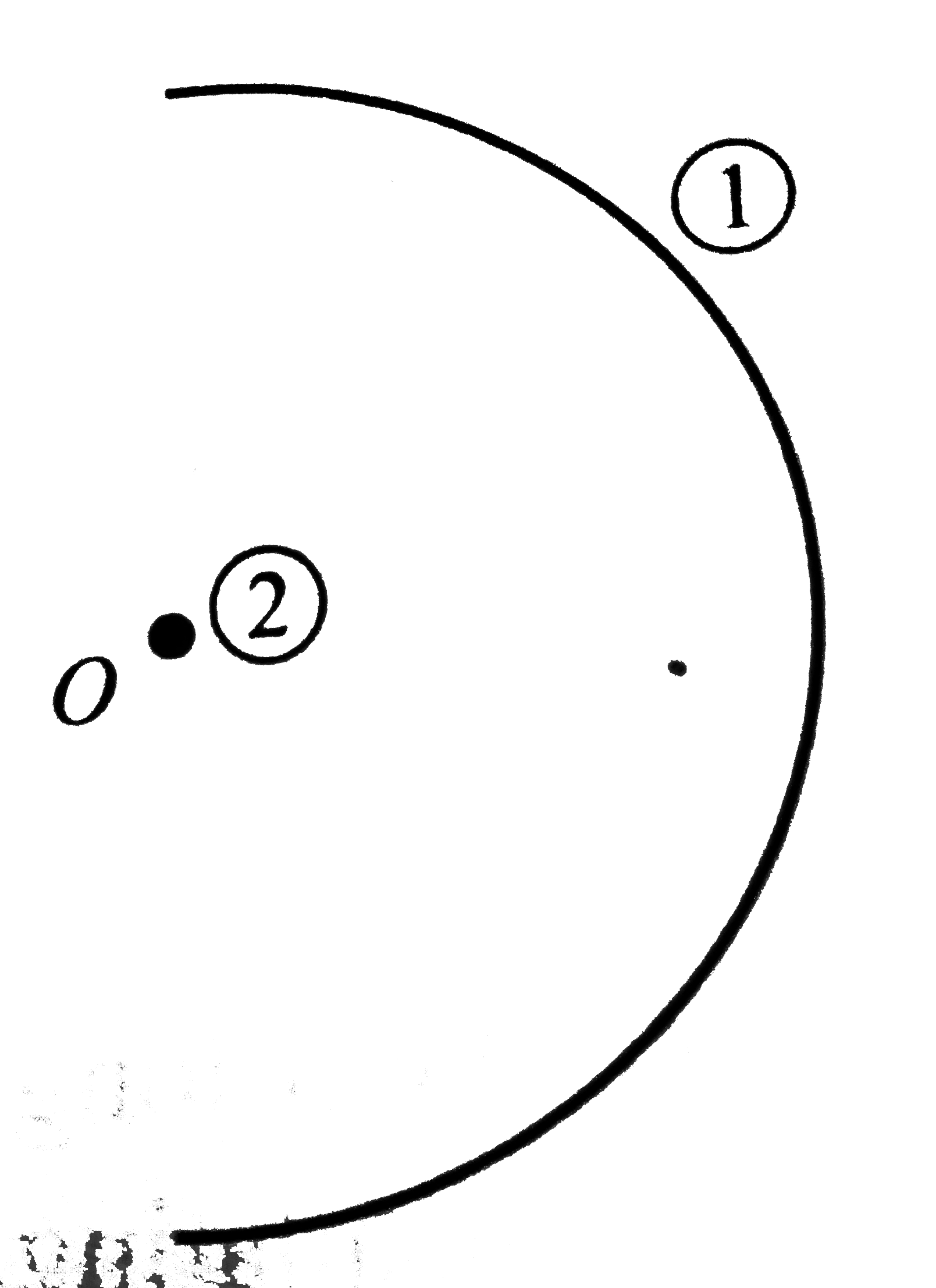A horizontal straight conductor when placed along south-north direction falls under gravity, there is
(a) an induced current from south-to-north direction
(b) an induced current from north-to-south direction
( c) no induced emf along the length of the conductor
( d) an induced emf along the length of the conductor
The correct Answer is:C
To solve the problem of determining the direction of induced current in a horizontal straight conductor falling under gravity while placed along the south-north direction, we can follow these steps:
1. Identify the Orientation of the Conductor:
The conductor is placed horizontally along the south-north direction. This means that one end of the conductor is towards the south and the other end is towards the north.
2. Understand the Magnetic Field:
The Earth's magnetic field has a specific orientation. In general, the magnetic field lines run from the north pole to the south pole of the Earth. Therefore, when we visualize the magnetic field in relation to the conductor, we can say that the magnetic field lines are directed from the north to the south.
3. Determine the Motion of the Conductor:
The problem states that the conductor is falling under the influence of gravity. This means that the conductor is moving downward.
4. Apply Faraday's Law of Electromagnetic Induction:
According to Faraday's law, an electromotive force (EMF) is induced in a conductor when it cuts through magnetic field lines. The induced EMF is proportional to the rate of change of magnetic flux through the conductor.
5. Analyze the Change in Magnetic Flux:
In this scenario, since the conductor is falling vertically and is aligned with the magnetic field lines (which are horizontal), it does not cut through the magnetic field lines. Therefore, there is no change in magnetic flux through the conductor.
6. Conclude About Induced EMF and Current:
Since there is no change in magnetic flux, according to Faraday's law, the induced EMF is zero. Consequently, if the induced EMF is zero, there will be no induced current in the conductor.
7. Final Answer:
Thus, the direction of induced current is nonexistent, and we conclude that there is no induced current in the conductor.
Summary:
The induced current in the horizontal straight conductor falling under gravity, placed along the south-north direction, is zero due to the lack of change in magnetic flux.
---
The conductor is placed horizontally along the south-north direction. This means that one end of the conductor is towards the south and the other end is towards the north.
The Earth's magnetic field has a specific orientation. In general, the magnetic field lines run from the north pole to the south pole of the Earth. Therefore, when we visualize the magnetic field in relation to the conductor, we can say that the magnetic field lines are directed from the north to the south.
The problem states that the conductor is falling under the influence of gravity. This means that the conductor is moving downward.
According to Faraday's law, an electromotive force (EMF) is induced in a conductor when it cuts through magnetic field lines. The induced EMF is proportional to the rate of change of magnetic flux through the conductor.
In this scenario, since the conductor is falling vertically and is aligned with the magnetic field lines (which are horizontal), it does not cut through the magnetic field lines. Therefore, there is no change in magnetic flux through the conductor.
Since there is no change in magnetic flux, according to Faraday's law, the induced EMF is zero. Consequently, if the induced EMF is zero, there will be no induced current in the conductor.
Thus, the direction of induced current is nonexistent, and we conclude that there is no induced current in the conductor.
The induced current in the horizontal straight conductor falling under gravity, placed along the south-north direction, is zero due to the lack of change in magnetic flux.
Topper's Solved these Questions
- ELECTROMAGNETIC INDUCTIONBook:CENGAGE PHYSICS ENGLISHChapter:ELECTROMAGNETIC INDUCTIONExercise:Exercises Multiple Correct
Explore 23 Videos
- ELECTROMAGNETIC INDUCTIONBook:CENGAGE PHYSICS ENGLISHChapter:ELECTROMAGNETIC INDUCTIONExercise:Exercises Asserton - Reasoning
Explore 8 Videos
- ELECTROMAGNETIC INDUCTIONBook:CENGAGE PHYSICS ENGLISHChapter:ELECTROMAGNETIC INDUCTIONExercise:Exercises Subjective
Explore 13 Videos
- ELECTRICAL MEASURING INSTRUMENTSBook:CENGAGE PHYSICS ENGLISHChapter:ELECTRICAL MEASURING INSTRUMENTSExercise:M.C.Q
Explore 2 Videos
- ELECTRON,PHONTS,PHOTOELECTRIC EFFECT & X-RAYSBook:CENGAGE PHYSICS ENGLISHChapter:ELECTRON,PHONTS,PHOTOELECTRIC EFFECT & X-RAYSExercise:dpp 3.3
Explore 15 Videos
Similar Questions
A long horizontal metallic rod with length along the east-west direction is falling under gravity. The potential difference between its two ends will
View SolutionSTATEMENT - 1 : The magnetic flux through a closed surface is zero.
STATEMENT - 2 : When a rod oriented along magnetic north and magnetic south direction falls under gravity. Potential difference developed across its ends is zero.
STATEMENT - 3 : A resistance is connected to an ac source. If an inductor is included in the circuit in series. The average power dissipated in the resistance will decrease.
View SolutionState Lenz's Law.
A metallic rod held horizontally along east-west direction, is allowed to fall under gravity. Will there be an emf induced at its ends? Justify your answer.
View SolutionThe buoyant force acts ...... (along/opposite to ) the direction of gravity
View SolutionA magnetic compass needle is placed in the plane of paper near point A as shown in figure. In which plane should a straight current carrying conductor be placed so that it passes through A and there is no change in the direction of the compass? Under what condition is the deflection maximum and why?

View SolutionA current carrying ring is placed in a horizontal plane. A charged particle is dropped along the axis of the ring to fall under the influence of gravity
View SolutionA direct current I flows in a long straight conductor whose cross section has the form of a thin halr-ring of radius R. The same current flows in the opposite direction along a thin conductor located on the axis of the first conductor. Find the magnetic induction froce between the given conductors reduced to a unit of their length.

View SolutionA long straight vertical conductor carries a current of 8A in the upward direction. What the magnitude of the resultant magnetic induction at a point in the horizonatal plane at a distance of 4 cm from the conductor towards South? (The horizontal compo-nent of earth's magnetic induction =4×10−5T)
View SolutionAn electron is ejected from the surface of a long, thick straight conductor carrying a current, initially in a direction perpendicular to the conductor. The electron will
View SolutionThe north pole of a long horizontal bar magnet is being brought closer to a vertical conducting plane along the perpendicular direction. The direction of the induced current in the conducting plane will be
View Solution